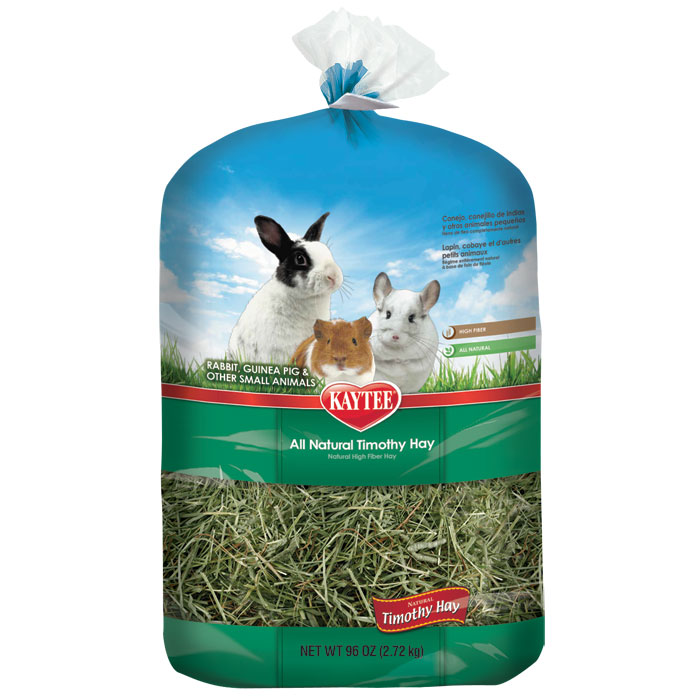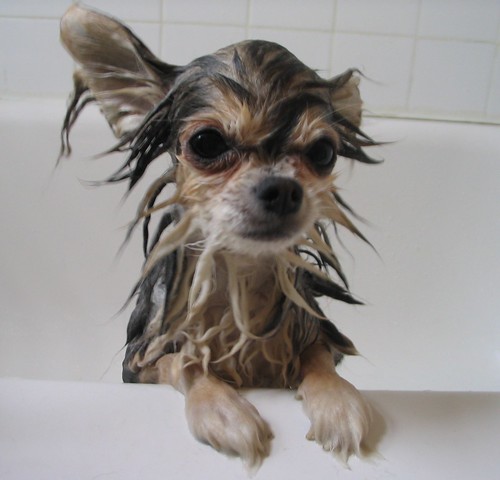As popular as these pets are, understanding the proper diet of our guinea pigs and rabbits is often cause for confusion, especially in first time owners. I thought it would be beneficial to compose a break down of the foods required of guinea pigs and rabbits for the overall health of these fuzzy little eating machines!
 Hays and Grasses
Hays and Grasses
Pellets used to be the main (if not the only) food offered to guinea pigs and rabbits. Studies have shown however, that feeding only pellets can affect the health of the animal. Rabbits and guinea pigs are grazing animals that spend a lot of their day eating. So why aren’t they all round as watermelons? The grasses and shrubs that these animals feed on in the wild are very low in nutrition, so they must eat a lot of them to obtain the amount of nutrients needed each day. Since this grazing behavior is instinctive, our furry friends from the pet store continue to eat all day long just like their wild cousins, except captive animals are eating nutrient-concentrated pellets that can cause obesity if consumed in large amounts. This is why the main diet of any guinea pig or rabbit should be hay, primarily Timothy Hay, which is closest to what they would be feeding on in the wild. Large handfuls of hay every day will help keep your pet in grazing mode which will aid in alleviating boredom, wearing down teeth, and keeping the weight off. You can also occasionally offer Brome, Orchard Grass, Meadow Mix, and Alfalfa to mix things up. Fresh grasses from the yard are also OK (in small amounts) as long as the grass is collected from an area free of pesticides, runoff and pet waste. Be sure the picked grasses do not contain wild mushrooms or berries, and rinse it thoroughly before giving to your pets. Read More »
 That Pet Blog That Pet Place Pet Blog
That Pet Blog That Pet Place Pet Blog


 It’s important to safe guard your pet against pests that can carry deadly diseases like Lyme disease. However, it is also important to remember that these medications are still pesticides and should be handled with care. The EPA found that some dogs, usually smaller breeds, and cats could have potentially harmful reactions to spot-on flea and tick treatments. Reactions ranged from skin irritation to more severe medical conditions like seizures, and in a few cases, even death. Most of the reactions were caused by “overdose” or using too much of the topical product for the size of the pet. Reactions in cats were typically the result of exposure to a dog- specific formula, either accidentally or through incorrect usage of the product. While the EPA mainly investigated “spot-on” flea and tick treatments, they recommend using caution with all
It’s important to safe guard your pet against pests that can carry deadly diseases like Lyme disease. However, it is also important to remember that these medications are still pesticides and should be handled with care. The EPA found that some dogs, usually smaller breeds, and cats could have potentially harmful reactions to spot-on flea and tick treatments. Reactions ranged from skin irritation to more severe medical conditions like seizures, and in a few cases, even death. Most of the reactions were caused by “overdose” or using too much of the topical product for the size of the pet. Reactions in cats were typically the result of exposure to a dog- specific formula, either accidentally or through incorrect usage of the product. While the EPA mainly investigated “spot-on” flea and tick treatments, they recommend using caution with all  important if your pet is weak, elderly, sick, on medication, pregnant or nursing. You should also carefully read all instructions before applying flea and tick treatments, especially if you have not used the product before. When purchasing a flea and tick treatments be sure to know the current weight of your pets to select the correct product.
important if your pet is weak, elderly, sick, on medication, pregnant or nursing. You should also carefully read all instructions before applying flea and tick treatments, especially if you have not used the product before. When purchasing a flea and tick treatments be sure to know the current weight of your pets to select the correct product. It’s no secret that your pets need fresh clean drinking water every day for optimum health. It’s also no secret that cats and some dogs are very finicky about, well, pretty much everything! With the warmer weather approaching I want to talk about your pet’s drinking habits.
It’s no secret that your pets need fresh clean drinking water every day for optimum health. It’s also no secret that cats and some dogs are very finicky about, well, pretty much everything! With the warmer weather approaching I want to talk about your pet’s drinking habits.
